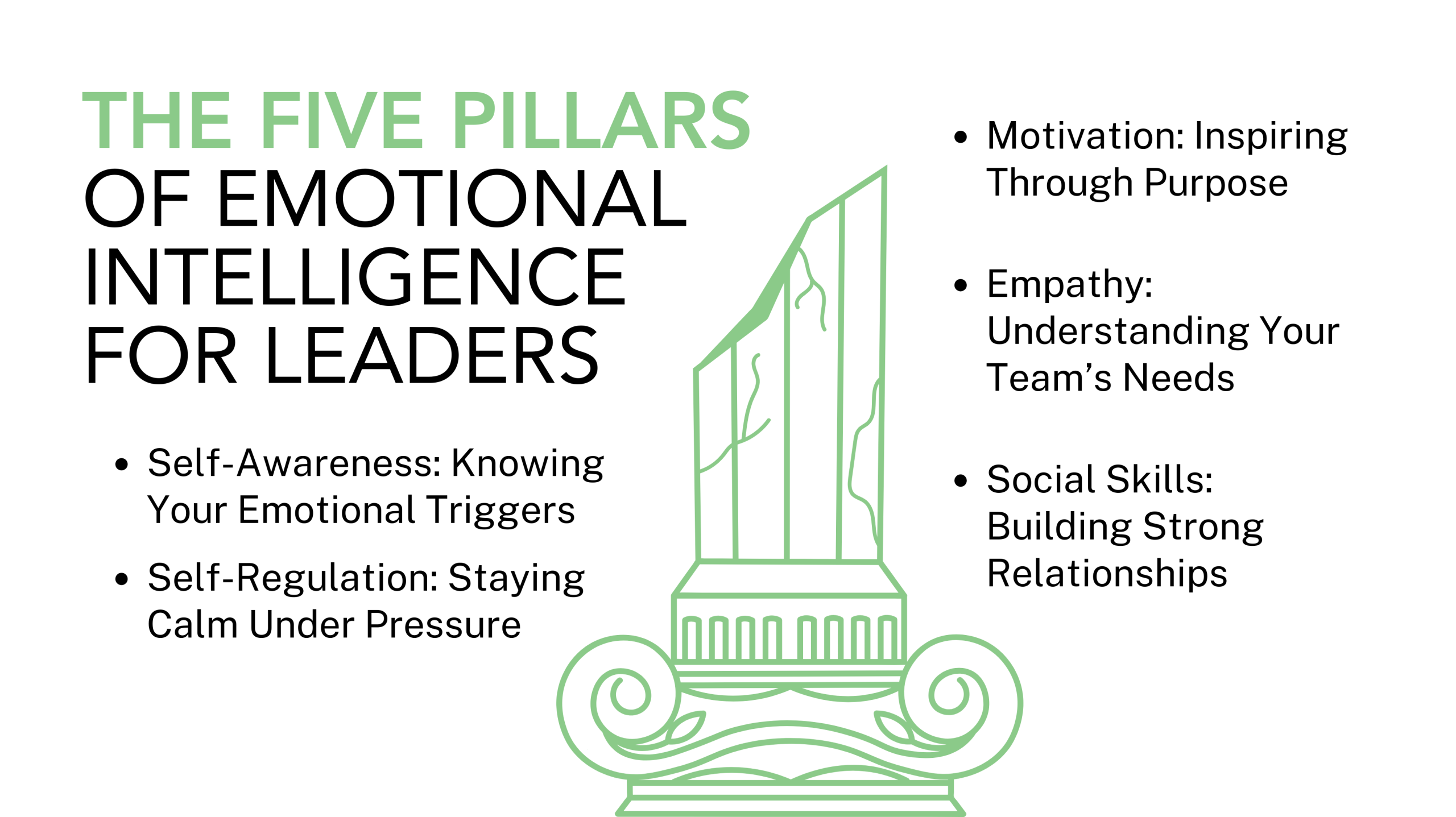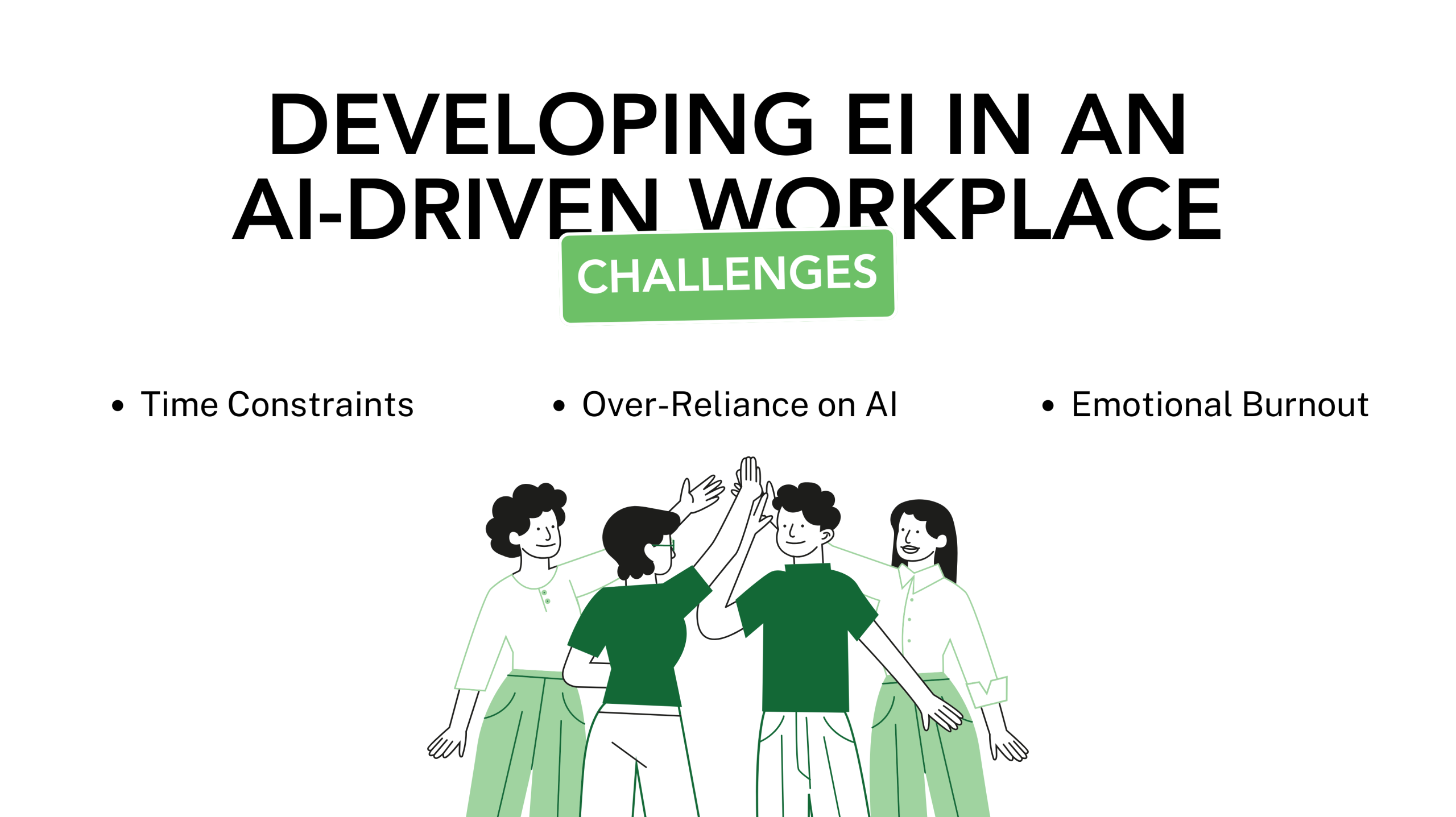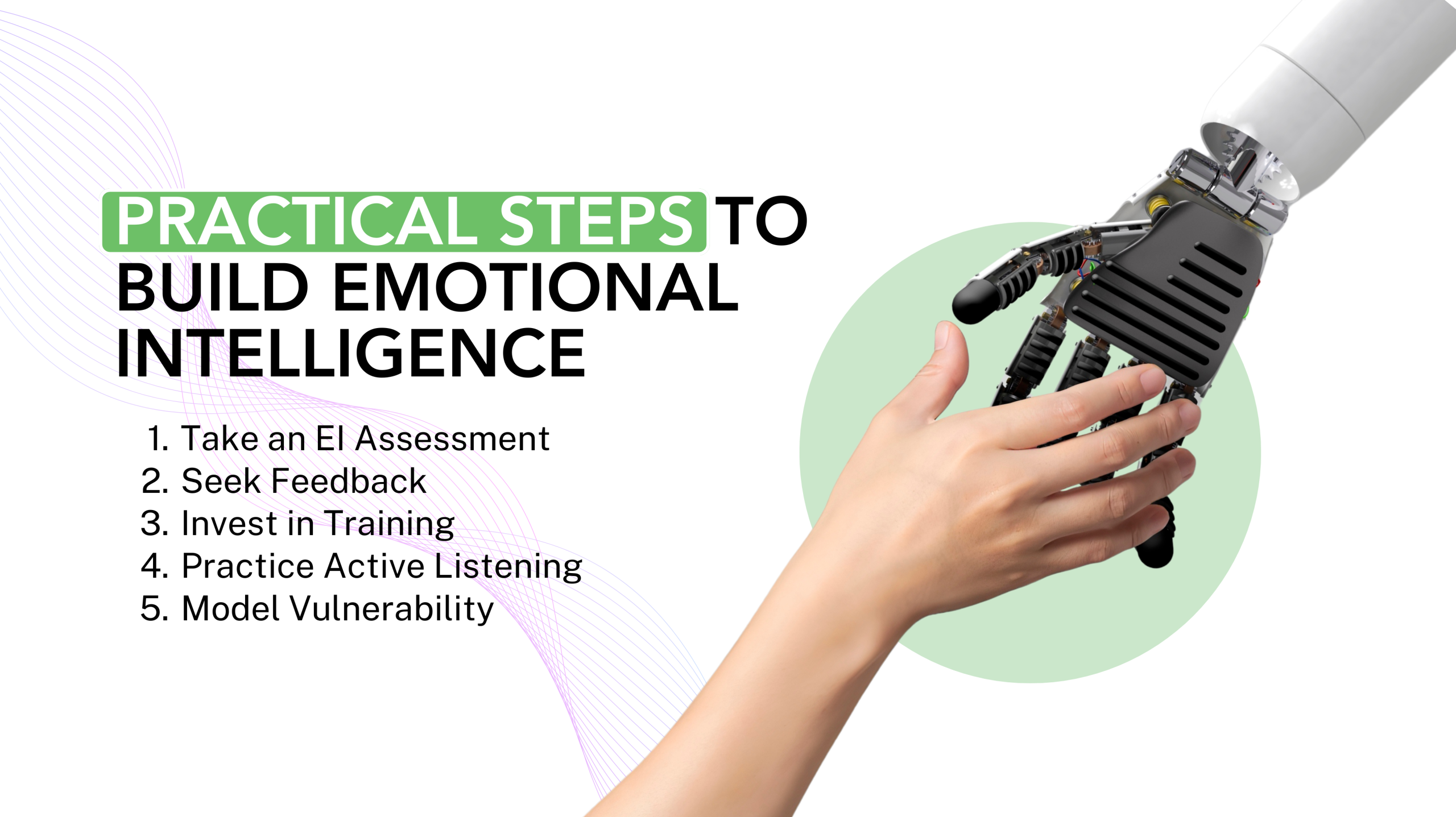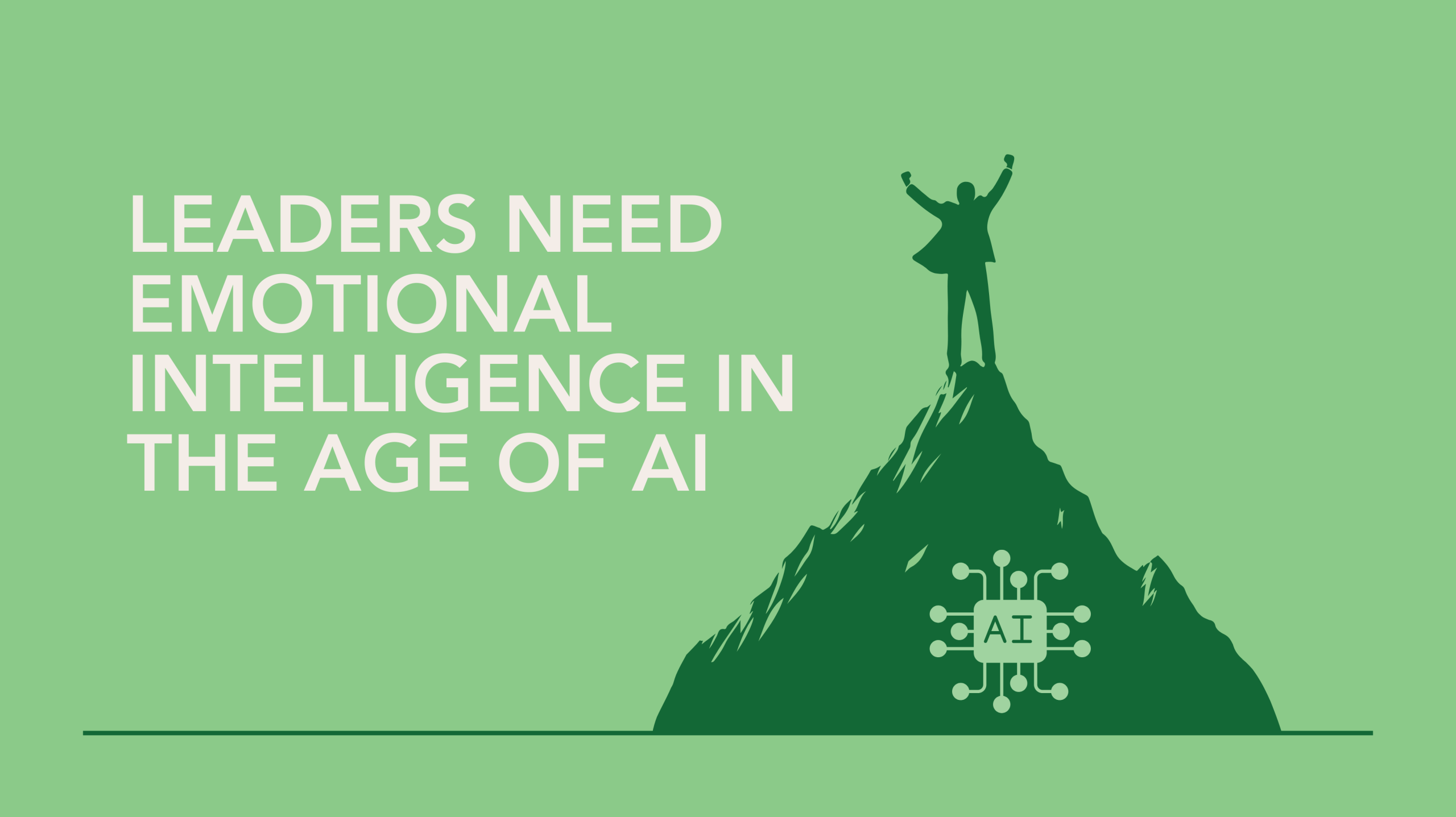Leaders Need Emotional Intelligence in the Age of AI
AI excels at processing data, predicting outcomes, and streamlining operations. Tools like predictive analytics or AI-driven HR platforms can optimize hiring or forecast market trends with unmatched precision. Yet, AI lacks the human touch needed to navigate complex interpersonal dynamics. Employees crave leaders who listen, understand their concerns, and foster trust—qualities rooted in EI.
In 2025, hybrid workplaces, gig economies, and rapid tech adoption amplify the need for emotionally intelligent leaders. According to a 2023 LinkedIn study, 92% of employees value empathetic leadership over technical skills. Meanwhile, AI’s rise can create anxiety about job security, making it vital for leaders to address fears and build resilience. Emotional intelligence bridges the gap between AI’s efficiency and the human need for connection, ensuring teams stay motivated and cohesive.
The Five Pillars of Emotional Intelligence for Leaders

Psychologist Daniel Goleman’s EI framework highlights five key components: self-awareness, self-regulation, motivation, empathy, and social skills. Here’s how each applies to leadership in an AI-driven era.
1. Self-Awareness: Knowing Your Emotional Triggers
Self-aware leaders understand their emotions, strengths, and weaknesses. In high-pressure settings, like managing AI-driven projects with tight deadlines, self-awareness prevents knee-jerk reactions. For example, a leader who recognizes their frustration with an underperforming AI tool can pause, reflect, and communicate calmly instead of lashing out.
Practical Tip: Practice daily reflection. Spend 10 minutes journaling about your emotional responses to workplace challenges. Tools like mood-tracking apps can help identify patterns.
2. Self-Regulation: Staying Calm Under Pressure
AI systems can fail or deliver unexpected results, testing a leader’s patience. Self-regulation ensures leaders respond thoughtfully rather than impulsively. For instance, when an AI-powered sales forecast misses the mark, a regulated leader investigates the issue and collaborates on solutions instead of blaming the team.
Practical Tip: Use the “5-5-5” breathing technique: inhale for 5 seconds, hold for 5, exhale for 5. This calms the nervous system during tense moments.
3. Motivation: Inspiring Through Purpose
AI can automate repetitive tasks, but it can’t instill purpose. Motivated leaders rally teams around shared goals, especially when AI disrupts workflows. For example, a leader might frame an AI tool’s adoption as a chance to focus on creative, high-impact work, boosting team morale.
Practical Tip: Align projects with your team’s values. During meetings, highlight how their work contributes to the company’s mission or customer success.
4. Empathy: Understanding Your Team’s Needs
Empathy is the heart of EI. In an AI-driven workplace, where employees may fear being replaced, empathetic leaders listen actively and validate concerns. For instance, if a team member worries about AI automating their role, an empathetic leader acknowledges the fear and discusses upskilling opportunities.
Practical Tip: Schedule regular one-on-one check-ins. Ask open-ended questions like, “How are you feeling about our new AI tools?” to foster trust.
5. Social Skills: Building Strong Relationships
AI can’t replicate the nuance of human collaboration. Leaders with strong social skills resolve conflicts, communicate clearly, and build inclusive cultures. For example, when integrating AI into a team’s workflow, a socially skilled leader ensures everyone understands the tool’s purpose and feels valued.
Practical Tip: Host team-building activities, virtual or in-person, to strengthen bonds. Use AI tools like Slack analytics to identify communication gaps and address them.
How EI Complements AI in Leadership
AI and EI aren’t at odds—they’re complementary. AI provides data-driven insights, while EI brings human judgment to the table. Consider a scenario where an AI tool flags low employee engagement. A leader with high EI digs deeper, using empathy to uncover root causes—like burnout or unclear roles—and crafts a tailored response.
Another example: AI-powered customer service chatbots handle routine inquiries, but complex complaints require human intervention. An emotionally intelligent leader trains their team to step in with empathy, turning frustrated customers into loyal ones. By combining AI’s efficiency with EI’s warmth, leaders create workplaces that are both productive and human-centered.
Challenges of Developing EI in an AI-Driven Workplace

Cultivating EI isn’t easy, especially in tech-heavy environments. Leaders face three key challenges:
- Time Constraints: With AI accelerating workflows, leaders may prioritize tasks over relationships. Solution: Block time for team check-ins, treating them as non-negotiable.
- Over-Reliance on AI: Some leaders lean too heavily on AI for decision-making, neglecting human input. Solution: Use AI as a tool, not a replacement for judgment. Consult your team before finalizing AI-driven strategies.
- Emotional Burnout: Constantly managing team emotions can drain leaders. Solution: Practice self-care, like mindfulness or exercise, to recharge.
Practical Steps to Build Emotional Intelligence

Here are five actionable strategies to boost your EI as a leader in 2025:
- Take an EI Assessment: Tools like the Emotional Quotient Inventory (EQ-i 2.0) pinpoint your strengths and areas for growth. Use results to create a personalized EI development plan.
- Seek Feedback: Ask trusted colleagues for honest input on your leadership style. For example, “Do I come across as approachable during stressful projects?”
- Invest in Training: Enroll in EI-focused workshops or courses on platforms like Coursera or LinkedIn Learning. Look for programs tailored to leadership in tech-driven workplaces.
- Practice Active Listening: During conversations, focus fully on the speaker, avoid interrupting, and paraphrase their points to show understanding.
- Model Vulnerability: Share your challenges—like adapting to a new AI system—to encourage openness. This builds trust and normalizes learning curves.
The Future of Leadership: EI as a Competitive Edge
By 2030, AI is expected to automate 30% of current jobs, per a McKinsey report. Leaders who prioritize EI will stand out in this landscape. They’ll foster adaptable, engaged teams that complement AI’s capabilities. Companies like Google and Microsoft already emphasize EI in leadership training, recognizing its role in innovation and retention.
In contrast, leaders who ignore EI risk disengaged teams and high turnover. Employees don’t leave jobs—they leave managers. A leader who combines AI’s power with EI’s warmth creates a workplace where people feel valued, not replaced.
Conclusion: Lead with Heart in the Age of AI
Emotional intelligence is the secret sauce for leadership success in 2025. As AI transforms workplaces, leaders who master self-awareness, self-regulation, motivation, empathy, and social skills will thrive. They’ll harness AI’s potential while keeping their teams inspired and connected. Start small—reflect on your emotions, listen to your team, and embrace feedback. Over time, these habits will make you a standout leader in an AI-driven world.

